- Administrator
- Albums and Singles
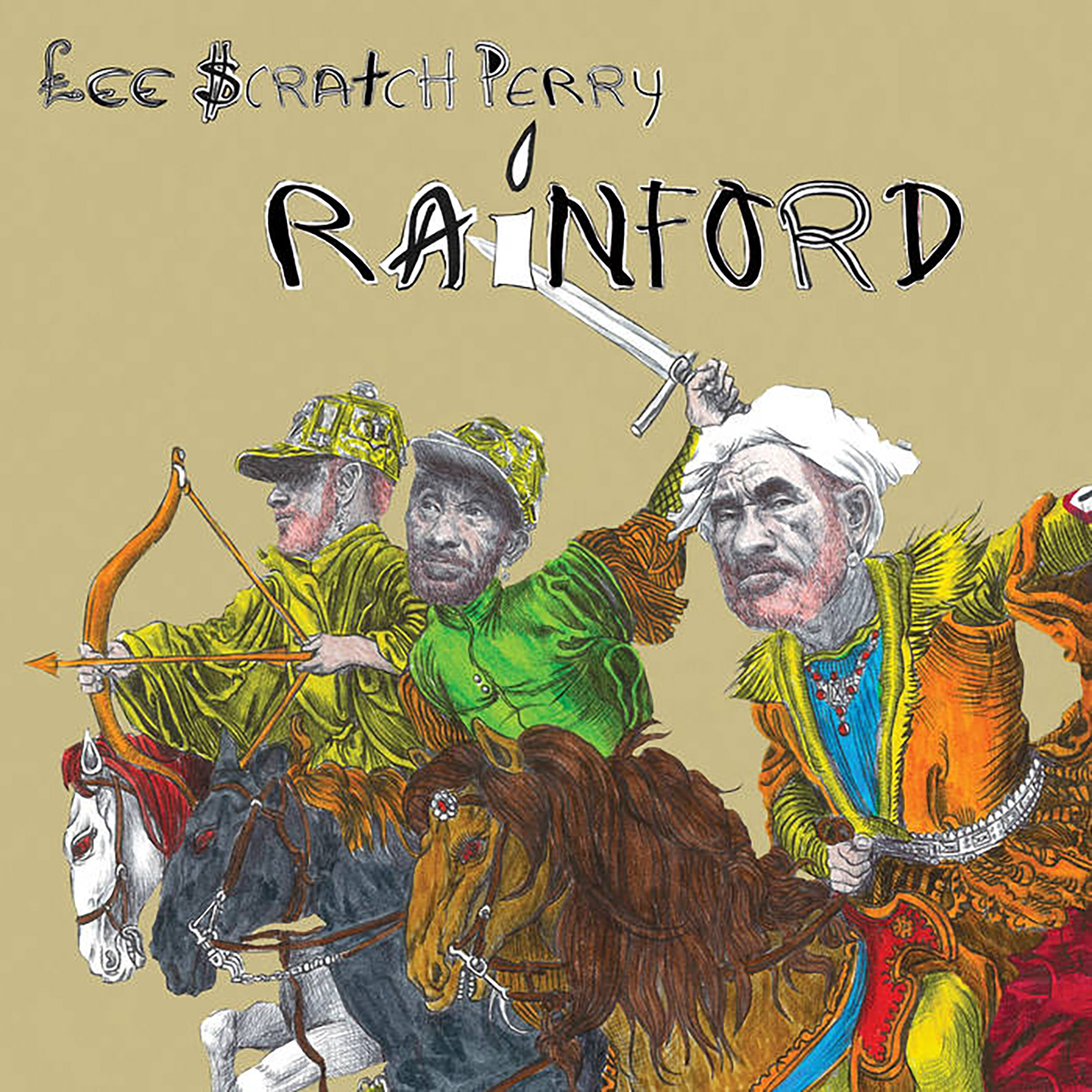 It is hard to overstate Lee "Scratch" Perry's influence on Jamaican music, hip-hop, and evolution of electronic music, as everyone who has ever used sampling or any dub-inspired production techniques is part of a continuum that he played a massive role in conjuring into being. For the most part, his most visionary work was recorded during the white-hot creative period in the '70s when Lee was obsessively recording at his Black Ark studio in Kingston, but his career after (allegedly) burning down his studio (to purge it of evil spirits) has objectively been a strange and erratic one with Perry embracing a sort of cosmic jester persona. He has always remained a boldly original thinker, however, and has continued to fitfully release some fine albums whenever he finds a sympathetic foil. One of the earliest artists to fill that role in Perry's post-Black Ark era was Adrian Sherwood for 1987's Time Boom X De Devil Dead (a union that was reprised two decades later with The Mighty Upsetter). With Rainford and its dub companion Heavy Rain, those two dub heavyweights are reunited once again (and at a time when both artists are experiencing a bit of a well-deserved renaissance). Both albums boast their share of killer material, but Heavy Rain is the more focused and uniformly strong of the pair.
It is hard to overstate Lee "Scratch" Perry's influence on Jamaican music, hip-hop, and evolution of electronic music, as everyone who has ever used sampling or any dub-inspired production techniques is part of a continuum that he played a massive role in conjuring into being. For the most part, his most visionary work was recorded during the white-hot creative period in the '70s when Lee was obsessively recording at his Black Ark studio in Kingston, but his career after (allegedly) burning down his studio (to purge it of evil spirits) has objectively been a strange and erratic one with Perry embracing a sort of cosmic jester persona. He has always remained a boldly original thinker, however, and has continued to fitfully release some fine albums whenever he finds a sympathetic foil. One of the earliest artists to fill that role in Perry's post-Black Ark era was Adrian Sherwood for 1987's Time Boom X De Devil Dead (a union that was reprised two decades later with The Mighty Upsetter). With Rainford and its dub companion Heavy Rain, those two dub heavyweights are reunited once again (and at a time when both artists are experiencing a bit of a well-deserved renaissance). Both albums boast their share of killer material, but Heavy Rain is the more focused and uniformly strong of the pair.
Rainford (Perry’s given first name) is ostensibly an entirely song-based album, but it is kind of a stretch to describe late-period Perry's spontaneous-sounding stream-of-consciousness vocalizing as anything resembling conventional songcraft.Nevertheless, it is quite fun to imagine him accumulating a mountain of crumpled papers as he struggles to rewrite lines like "reggae on the moon, super ape on the moon" until they convey exactly the nuanced meaning that he intended (embellished with jabbering animal noises, of course).It would be more apt to say that Perry instead delivers some spirited vocal performances over a series of solid grooves provided by a large cast of On-U Sound/Dub Syndicate luminaries and associates.That said, there are actual choruses for several pieces that feature hooks sung by Denise Sherwood Devenish and Emily Sherwood Hyman (Adrian's daughters).As such, Rainford is both a family affair and an On-U Sound all-star celebration.It is appropriate then that Rainford often has the feel of a party album, albeit quite an amusingly off-kilter one.For example, the laid-back ska groove of "House of Angels" could fit quite seamlessly into any beach party scene from a spring break-themed '80s movie.Elsewhere, the playfully deranged "Makumba Rock" resembles a gleefully hallucinatory and dub-damaged dance party in a deep jungle.Perry, unsurprisingly, is at his most animated and unhinged throughout that piece, fake-sobbing and periodically pleading for his mommy (presumably because the party is simply too crazy even for him).Amidst all the lunacy, however, there are some very cool and unexpected twists, as Samia Farah contributes some jazzy vocal flourishes and Sherwood increasingly warps the groove into a whooshing, sci-fi mindfuck. 
The rest of the album is a bit of a mixed bag, as Perry's characteristically erratic muse leads him to both some perplexing misfires (the overdramatic "Let it Rain" and the kooky "Cricket on the Moon") as well as a handful of legitimately inspired gems.Naturally, Sherwood and the assembled cast of UK reggae luminaries deserve a hell of a lot of credit for the latter themselves–particularly for the dub-wise slow-motion chug of "African Starship," which benefits from some absolutely delightful (and understated) flute, trumpet, and synth contributions. Notably, "African Starship" also features the multi-instrumental talents of Gaudi, who seems to bring out the best in Perry almost every time he appears.For example, Perry sounds like a wizened, melancholy prophet in the slow, heavy groove of "Children of the Light" and the piece's skittering dub flourishes, soulful melodica, and toy piano hooks elevate it to something approaching transcendence.Gaudi is not involved in "Kill Them Dreams Money Worshippers" or the closing "Autobiography of an Upsetter," however, and that pair round out an unexpectedly near-perfect run of songs on the album’s second half.Admittedly, "Kill Them Dreams" feels like a bit of an anachronism, resembling an idiosyncratic would-be classic from the early '80s, but it is a good one and I am always on-board whenever anyone assures me that we are about to have a black magic party."Autobiography," on the other hand, is exactly what the title promises, as Perry tenderly looks back on his life over a squelchy reggae vamp that features a host of inspired vocal flourishes from guest Leigh Stephen Kenny.The "I am The Upsetter" vocal hook is an especially great touch.More than any other piece on the album, "Autobiography" captures Perry as his most endearing and human.Moments like those are what make Rainford a significant release, as the album occasionally reveal the deep soul and hard-earned wisdom that is usually concealed by Perry's penchant for eccentric antics and self-referential wordplay.
Samples can be found here.

In traditional Jamaican dub fashion, Heavy Rain deconstructs and reinvents most of the songs from Rainford to shift the emphasis away from the vocals and onto the groove.That said, there are also some welcome subtractions ("Let It Rain"), some great new additions, and some significant changes in the cast of characters involved.As such, it often has a very different tone than its original source material.
The biggest surprise is that Brian Eno turned up to help transform "Makumba Rock" into the relentlessly propulsive and spacey "Here Come The Warm Dreads."Elsewhere, former Skatalite Vin Gordon joins the party to enhance three pieces with some lazily smoldering trombone solos.Notably, one of those three pieces is quite an impressively radical reshaping of "Kill Them Dreams" (now "Rattling Bones and Crowns") that carves away all the "pop" touches to leave behind a sinuous and contemporary-sounding slab of heavy dub.In fact, almost all of Heavy Rain's enhancements are for the better, aside from perhaps a few questionable harmonica intrusions and the removal of all the crazy jungle sounds for "Makumba Rock."The new version of "Autobiography of an Upsetter" is not exactly an improvement either, but that is only because the original was just about perfect as is.That said, the more spacious and gently hallucinatory version of "Children of the Light" ("Enlightened") is every bit as good as the original.And all of the weaker pieces from Rainford seem considerably stronger in their newly altered form.For the most part, Heavy Rain unerringly excises or significantly downplays almost every element from Rainford that felt at all kitschy or retro.Also, the entirely new pieces are universally quite good (or at least endearingly weird, like the all-too-brief and awkwardly lurching "Hooligan Hank"). 
As was the case with Rainford, Gaudi's handful of appearances tend to correlate strongly with the album's best songs.In this case, that hot streak continues with a pair of killer new pieces: the slow, heady throb of "Dreams Come True" and the rolling, clattering "Mindworker."The latter also features an especially fiery vocal performance from Perry in full prophet mode, as he enigmatically rants about collecting souls, "transfigurating" minds, and ruling the night in the land of slime.Of course, it should be noted that Gaudi's efforts tend to stand out precisely because the rhythm section, the guitars, and the dubbed-out percussion flourishes of Adrian Sherwood are all fully absorbed in conjuring up the heavy, fluid grooves that form the backbone of everything.It is very easy to take participants like Crucial Tony, George Oban, and Style Scott for granted, as they have been making great reggae for so long that they make it seem totally effortless and organic.In other non-Gaudi news, "Above and Beyond" is still another unexpected new gem, as saxophonist Paul Booth and violinist Sami Bishai engage in dueling solos over a muscular, bass-heavy groove.
When all of those great moments are added up, they amount to a remarkably solid and very current-sounding outing for Perry, rounding out quite an impressive streak of strong 2019 collaborations (he also recorded with Peaking Lights and hip-hop producer Mr. Green).To some degree, it is not at all surprising that the dub companion to Rainford would be stronger than Rainford itself, as Perry has always been far more renowned for his imagination and his production skills than he has been for his singing.However, I was surprised that Rainford occasionally hit the higher highs of the two releases, as Perry's offbeat charisma is very hard to resist when he is focused and impassioned.While I sincerely doubt that there is anyone who expects the deeply idiosyncratic and unpredictable Perry to record a flawless album as an octogenarian, a legitimately strong case could be made that he did exactly that in a roundabout way: if the best songs from Rainford and the best songs from Heavy Rain were brought together, the resultant release would be every bit as good as many of Perry's more celebrated '70s releases.The only real difference is that Perry is now happily luxuriating in a genre that he created decades before rather than actively trying to pioneer and define a new one.
Samples can be found here.
Read More
- Administrator
- Albums and Singles

This third installment of Fovea Hex’s excellent "The Salt Garden" trilogy brings the series to a close on an unexpectedly uplifting note, as Clodagh Simonds' ensemble transform their signature haunting and meditative hymnals into joyous, light-filled ones. Much like its predecessor, however, The Salt Garden III has also been released in an expanded edition with some bonus remixes. In this case, however, the remixes are a track-for-track reimagining of the entire EP by Headphone Dust's Steven Wilson. In essence, that offers two significantly different versions of the same EP, as the Wilson remixes take these four songs in a more shadow-shrouded and meditative direction akin to the previous EPs. Naturally, both are a delight, as Fovea Hex is a project like no other, occupying an enchanted and timeless realm of sublime, organic beauty.
As with all Fovea Hex releases, the beating heart of The Salt Garden III is Clodagh Simonds' voice, as her simple, lovely melodies float over understated, minimal musical backdrops to evoke something akin to an ancient Druidic ceremony in a forest clearing.This time around, however, Simonds is joined by a pair of choral ensembles (the Dote Moss Choir and the Medazza Choir) to occasionally expand those melodies into harmonically lush and rapturous crescendos.The opening "The Land's Alight" is the definitive statement in that vein, as it begins as a chant-like minor key reverie over a gently shimmering bed of synthesizer drones.Around the midpoint, however, the tone completely transforms and Simonds' voice is joined by a mass chorus for a radiant crescendo brimming with light and simple joy.Objectively, it feels like the EP's clear centerpiece, but I am personally more drawn to the record's darker second half, as I have never been the target demographic for beatific rapture or radiance.Bridging those divergent moods is a lovely and delicate instrumental piece ("Trisamma") that highlights Cora Venus Lunny's darkly sensuous strings.
The more melancholy half of the EP begins with "A Million Fires," which is another choir-centric piece, though its heavy harmonium drones and majestic tone imbue it with a bit more gravitas than "The Land's Alight."In fact, it almost feels like an elegy, but there is an undercurrent of hopefulness that gives it an ambiguous and bittersweet feel that resonates more deeply with me than pure light or pure darkness would have.The closing "The Given Heat" initially creeps into far more seething and haunted territory, but it has more complicated emotions lurking in its core as well, as it organically swells into warm, ascending crescendos as it unfolds.More than any other piece on the EP, "The Given Heat" is where it most strongly feels like all of the individual components of Fovea Hex seamlessly come together in fluid harmony, as structures effortlessly dissolve and eerie synth tones quaver and swoop in the periphery like flickering ghosts.Like all of the other pieces, it feels like a glimpse into an imagined past, but twists that aesthetic by presenting it more like a precarious dream with some very dark shadows gnawing at the edges.      
For the most part, Wilson's four remixes faithfully retain the spirit and structure of the original pieces, but they feel slowed and stretched in a way that pulls them a bit closer to ambient territory.That makes them a lovely and welcome coda for a release that is all too brief, but I also quite liked what Wilson did with his version of "The Land's Alight," as the climatic switch to a major key is deconstructed into hallucinatory abstraction that favorably calls to mind some of This Mortal Coil's more experimental moments.In fact, given that this EP is a farewell to a beloved trilogy, I kind of wish Wilson had continued on and remixed his remixes so that the EP repeated again and again in increasingly dissolved and dreamlike form.In the absence of that imaginary tour de force, however, The Salt Garden III is another characteristically fine release in Fovea Hex's near-flawless discography.To my ears, the first two Salt Garden EPs featured stronger songs and more memorable hooks, but the final EP's shift towards mood and atmosphere casts its own kind of lovely spell.More importantly, the fundamental beauty of this project has always lay in its overall aesthetic rather than in the craftsmanship of any individual songs and that remains true here.When Simonds and her collaborators are at their best, it uncannily feels like they are vessels through which imagined ancient folk songs are being soulfully and supernaturally channeled.
Samples can be found here.
Read More
- Administrator
- Albums and Singles

Like a lot of people, I am guilty of failing to properly appreciate Marcus Fjellström’s deeply unconventional and haunted vision during his lifetime, but Miasmah's Erik Skodvin has long been a tireless champion of the late Swedish composer's work, as the label was home to much of Fjellström work from the last decade. After hearing these reissues of Fjellström’s earliest two albums, I now fully understand why Skodvin was so passionate about his work: these two albums lie somewhere between a viscerally disturbing nightmare and a macabre fairy tale. I suppose that is not exactly surprising stylistic terrain within the Miasmah milieu, but the execution is what matters and Fjellström was on an entirely different plane than just about anybody else in that regard. At their best, these two albums make me feel like I am plunged into an intense and hallucinatory dreamscape filled with terrifying ballets, haunted clocks, and blood-soaked puppet shows.
Exercises in Estrangement was originally released back in 2005 on Manchester's Lampse label and it probably captures Fjellström at the peak of his dark intensity.Moreover, it is evidence that his vision was fully formed and bracingly original right from the start, though he certainly continued to evolve and explore more nuanced themes as his career progressed.At this stage, however, Fjellström's aesthetic could best be described as "an incredibly promising young classical composer witnessed some kind of mind-destroying Lovecraftian horror and was damned to forever experience viscerally disturbing visions every time he tried to close his eyes or sleep."Only part of that is actually based in reality (Fjellström studied at a Swedish conservatory and was an exceptionally gifted composer), but it is impossible to experience the sickly, pulsing dissonance of the opening "Planchette" without wondering what caused his vision to take such a disturbing and infernal path.
Part of that trajectory can admittedly be explained by some of his influences (Ligeti, Badalamenti, and Zdeněk Liška (frequent composer for macabre, surrealist animators like Jan Švankmajer and the Quay Brothers)), but when "Planchette" erupts into the massive, shuddering terror of its crescendo, it feels like Fjellström's true inspirations were far more dark and primal than a mere healthy interest in other radical composers.Thankfully, the rest of the album is not nearly as assaultive and nerve-jangling as its brilliant opener, but it is no less evocative and inspired.It is important to note that there is a streak of playful whimsy that runs through the album as well, though it is definitely more akin to that of the aforementioned Quay Brothers than the comparatively toothless goth-lite of a Tim Burton film (though Skodvin mentions that Fjellström delighted in gleefully mashing together high and low art and celebrating "bad" taste).
That mischievous tendency is best illustrated by "Marionettes Revisited," which sometimes evokes a gaggle of panicked elves reacting to a rash of reindeer mutilations at the North Pole.Beyond the indecipherable cacophony of those cartoonish voices, however, lies an incredibly sophisticated composition, as tumbling xylophone melodies, military snares, and darkly impressionistic piano motifs bleed together for an intoxicatingly nightmarish tableau.Later, "Kandinsky Kammer" dabbles again in the blurring of childlike wonder and discordant horror, as the opening motif approximates a haunted calliope at a deserted carnival.My other favorite pieces are the roiling, slow-building terror of "Jeux" and the lysergically viscous synth burble of "Anstice.""Jeux" is especially revelatory, as the howling climax is a such a masterful swirl of swelling discordant strings and clattering, confused sounds that I feel like I am being swept up in a fucking tornado.I am also quite fond of the considerably less extreme "Oil," which calls to mind a foreboding and subtly curdled variation on Debussy-style impressionism.
That piece is followed by a brief and surreal interlude of noirish jazz, which highlights yet another fascinating aspect of Exercises in Estrangement: it is akin to an infernal fun house in which each new door reveals a grotesque twist on a different genre, yet all feel like natural extensions of Fjellström's core vision.I never get the sense that Fjellström was self-consciously attempting to show off the sheer breadth of his artistry–it just feels like he seamlessly repurposed a wide variety of stylistic threads to paint different scenes within the same coherent overarching vision.While I am quite fond of that vision, Exercises in Estrangement would not nearly as good without its unerring and sometimes transcendent execution.In just about anyone else's hands, music in this vein would feel oppressive and bombastic, but Fjellström's lightness of touch and unerring intuition make the transitions from delicate melodies to roaring, seismic climaxes feel earned and organic.This is an absolutely amazing debut (and an amazing album in general).I just wish it had not taken me almost 15 years to finally hear it.
Samples can be found here.

On 2006’s amusingly titled Gebrauchsmusik, Fjellström took a somewhat different and more overtly conceptual approach, but the resultant music is no less harrowing, intense, and wildly original.The title translates as "utility music" and Fjellström sincerely set out to compose exactly that in his uniquely skewed and macabre way, writing a suite of pieces that he deemed appropriate for various activities like dancing, death, celebration, and war.Obviously, subjects like death and war lend themselves quite easily to the distended and sickly horror of Fjellström's aesthetic, but he was more than happy to invert ostensibly cheery occasions like festivals into hellish, dissonant miasmas as well.In Fjellström's vision, all roads inexorably lead to a phantasmagoric plunge into hell's depths.
The album's most unusual piece is arguably the opening "Reanimation Music," as it is a rare, explicit nod to one of Fjellström's influences (in this case, most likely György Ligeti’s "Lux Aeterna").In it, layers of vocals from an "enigmatic mezzosoprano" are dissonantly smeared together with strings and flutes into an unearthly reverie of unsettling and uncomfortable harmonies.None of the album's other pieces are at all similar, but I suppose that is simply because none of the other pieces are intended to soundtrack a reanimation.War, death, dance, and fairy tales, on the other hand, all have their own multi-part suites (though Fjellström assigns each piece a numbered "perspective").Those perspectives tend to be quite different from one another, however, so one war-themed piece does not necessarily resemble another war piece.That said, both the "1st Perspective" and the "3rd Perspective" of the war compositions resemble some kind of hellish and fiendishly complex Rube Goldberg contraption (or perhaps an unholy mash-up of several dozen broken music boxes and the innards of a demonically possessed clock tower).There is a significant difference in scope between them though, as the first movement is a clattering and clicking evocation of seething menace, while the final movement builds into a full-on shuddering hellscape of swirling, blurting dissonance.In between those two pieces, however, lies the very different "2nd Perspective," which is an understated and shivering soundscape that seems almost entirely crafted from breathily misused flutes.
Given how inventive and unpredictable Fjellström's perspective can be on any given theme, just about all of Gebrauchsmusik's ostensibly disparate threads eventually find their way into some viscerally disturbing and absorbingly hallucinatory territory.That said, the two fairy tale pieces are arguably the most consistently unique and fascinating, as both resemble the curdled harmonies of an infernal orchestra tuning their instruments mingled with crackling EVP recordings of an enigmatically distorted male voice.Elsewhere, "Dance Music, 2nd Perspective" sounds like a sickly, rickety, and eerily spectral reimagining of "Dance of the Sugar Plum Fairy."Amusingly, Fjellström's treatment of "Festivity" is even darker still, resembling a pitch-shifted and time-stretched cacophony of church bell tones bleeding together in ugly harmonies.
In classic showman fashion, however, Fjellström saves the most disturbing and gnarled piece for the album's grand finale.Though it is somewhat brief, "Death Music, 2nd Perspective" is incredibly effective, evoking a scorched and churning hellscape of damned souls that stretches out into infinity.That is a fittingly chilling ending for Fjellström's vividly-realized and richly textured nightmare, leaving behind a lingering uneasiness that is extremely well-earned.While I love Exercises in Estrangement, Gebrauchsmusik feels like a more complete and disturbingly realized vision, uncomfortably resembling a diabolical inversion of a Christmas pageant for children in which all audience members are reduced to emotionally scarred husks sitting in pools of their own urine by the time the final curtain closes.I am not sure who the target demographic for such an experience is (besides me, obviously), but I am sure that Marcus Fjellström was an absolutely brilliant composer for bringing such an intense, unearthly, and legitimately horrifying vision into the world.
Samples can be found here.
Read More
- Administrator
- Albums and Singles
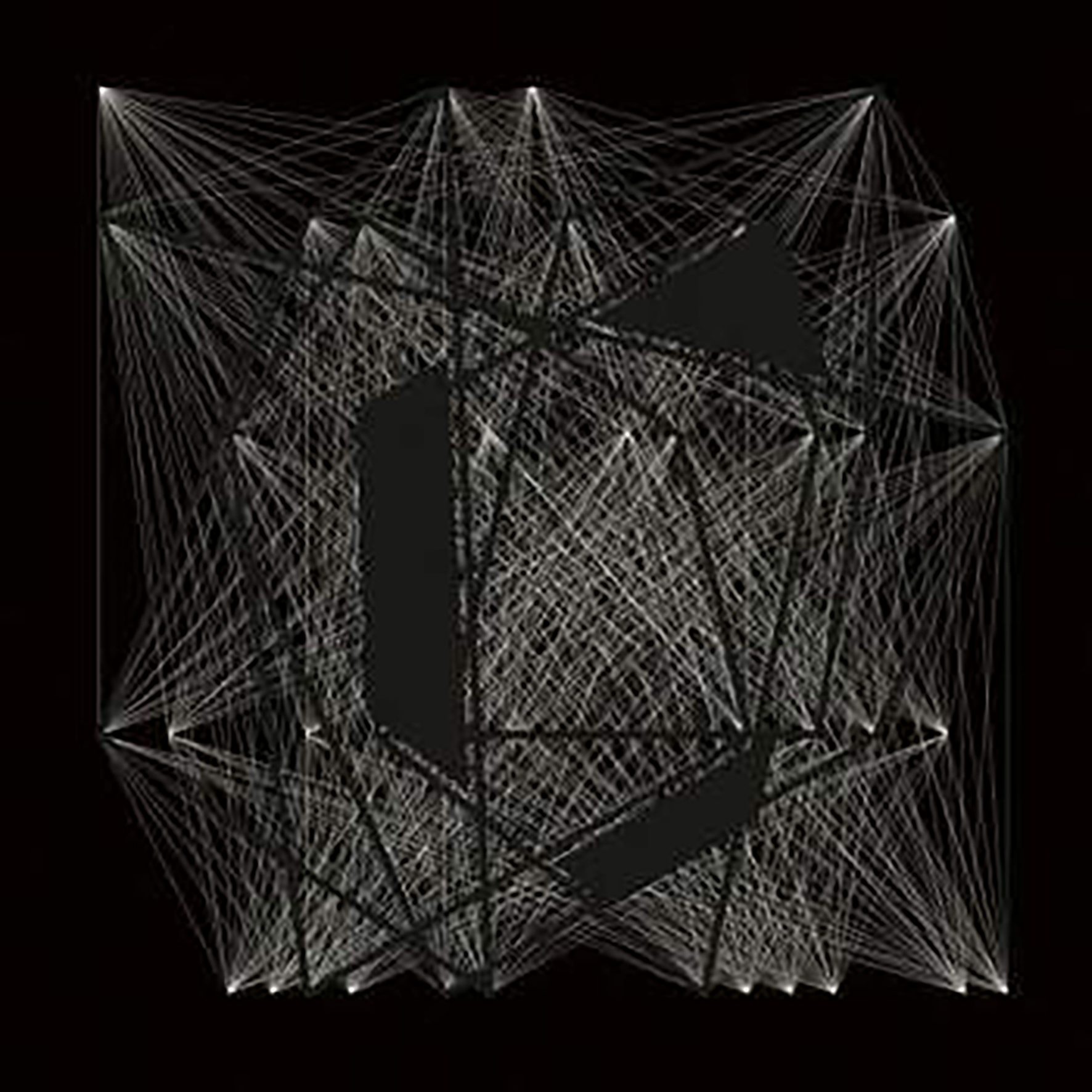 I certainly grouse a lot about the seemingly endless tide of modular synth albums being released in experimental music circles these days, but there are a handful of artists who induce me to marvel at the truly incredible potential of such gear instead. One such artist is erstwhile guitarist Cam Deas, who absolutely floored me with last year's brilliantly twisted and phantasmagoric Time Exercises. Happily, this latest release returns to roughly that same squirming, tormented and mind-dissolving terrain, but the world of the more spacious and nuanced Mechanosphere evokes a somewhat different feel than its more explosive and abrasive predecessor.
I certainly grouse a lot about the seemingly endless tide of modular synth albums being released in experimental music circles these days, but there are a handful of artists who induce me to marvel at the truly incredible potential of such gear instead. One such artist is erstwhile guitarist Cam Deas, who absolutely floored me with last year's brilliantly twisted and phantasmagoric Time Exercises. Happily, this latest release returns to roughly that same squirming, tormented and mind-dissolving terrain, but the world of the more spacious and nuanced Mechanosphere evokes a somewhat different feel than its more explosive and abrasive predecessor.
There are lot of reasons why artists are drawn to modular synthesizers, but the one that I find most compelling is when an artist is led there because they have a vision so radical, deranged, or obsessive that they cannot realize it through any other means.At the very least, Deas' recent work can be said to fall quite squarely in the "radical" category, as he uses a computer-controlled synth on Mechanosphere to construct a strange and complex interplay of erratic rhythms.He also wisely exploits the instrument's rich possibilities in conjuring up densely gnarled and unearthly textures, bringing to life yet another howling cacophony of extradimensional jungle creatures.In fact, one of the most significant differences between Time Exercises and Mechanosphere is simply the perceived proximity of that unholy menagerie.With Time Exercises, it felt like I was in its writhing, squirming, and jabbering midst.With Mechanosphere, it often feels like I am attending some kind of ancient tribal ritual in a remote jungle village and any Lovecraftian horrors that await me are still mostly off in the distance (though I can definitely hear them approaching).As such, the rhythms of that imagined ceremony tend to be the heart of this album, as the heavier sounds are generally more threatening and unnerving than downright apocalyptic.To some degree those rhythms resemble a layered, tempo-shifting collage of traditional hand percussion recordings by some intrepid explorer who vanished into the rainforests of Borneo a hundred years ago.That said, they have since been polished to a futuristic dancefloor sheen and set to an erratic kickdrum thump.As such, Mechanosphere frequently resembles a maniacal dub experiment built from dozens of pitch-shifted and temporally mangled recordings of woodpeckers.    
If there can be said to be a "single" on Mechanosphere, it is unquestionably "Set in Motion," as there is an uncharacteristically lovely and chime-like melody in the eye of its convulsively shuddering and clattering storm.In fact, it would almost feel like a prescient vision of a jerkily kinetic strain of alien dance music if there were not so many heaving, seismic swells violently distending the space-time continuum.The following "Four Flows" shares some fragile ties to dance music's most outré fringes as well, as its shuffling and lurching robo-rhythm is intertwined with the slow pulse of a repeating deep chord.In fact, it approaches an especially textural, mechanized, and off-kilter strain of dub techno, but that comparative accessibility is gleefully curdled by the sickly way that central chord unpredictably slithers and squirms out of its moorings.There are couple other intriguing deconstructions of dance music to be found as well, as "Refract Deflect" sounds like an Andy Stott single being violently stretched, compacted, and pulled apart by unseen demonic forces.Elsewhere, "Collapse" resembles a spasmodically deranged kickdrum pulse in the center of an intense electrical storm.The remainder of the pieces are bit more atmospheric in nature, though that atmosphere can feel disconcertingly alive and malicious at times.On "Drift Though" for example, it feels like the fabric of reality is nightmarishly bulging and tearing as an otherworldly horror strains to break through a dimensional barrier.On "Slip," it sounds like it finally succeeded, as the final moments of the piece evoke grotesquely squirming tentacles emerging from a clattering squall of static and chaos.
While Mechanosphere is an unapologetically visceral and experimentally minded affair from start to finish, it is important to note that there is a remarkably coherent and imaginative vision at its heart.That is best illustrated with the closing "Solitude," as all the ugly, gnarled textures and skittering rhythms vanish to leave only a haze of grinding metallic swells and gentle oscillations that feels like a supernatural mist slowly rising up from the trees.Despite its underlying sharpness and the eerie queasiness of the harmonies, it legitimately achieves a kind of sublime alien beauty.Moreover, there are glimpses of that beauty all throughout the album, oozing out from the gaps in Deas' inhumanly dexterous percussion eruptions in multifarious, distended forms.While I am not sure that Mechanosphere necessarily tops the bombshell of Time Exercises, the shades of melodicism and harmony that fitfully creep into the convulsive chaos mark a significant and welcome evolution, as an album like Time Exercises can only be made once: any attempt to replicate its jabbering elemental force is unavoidably damned to yield diminishing returns.To his great credit, Deas intuitively grasped that and acted accordingly, though that did not dampened his resolve to unleash yet another wildly heaving, synapse-exploding behemoth of an album.Mechanosphere is a different kind of behemoth, however, as it offers some hidden layers of depth to explore and absorb once I get past the more immediate and mind-blowing aspects of its skittering madness and volcanic intensity.
Samples can be found here.
Read More
- Administrator
- Albums and Singles
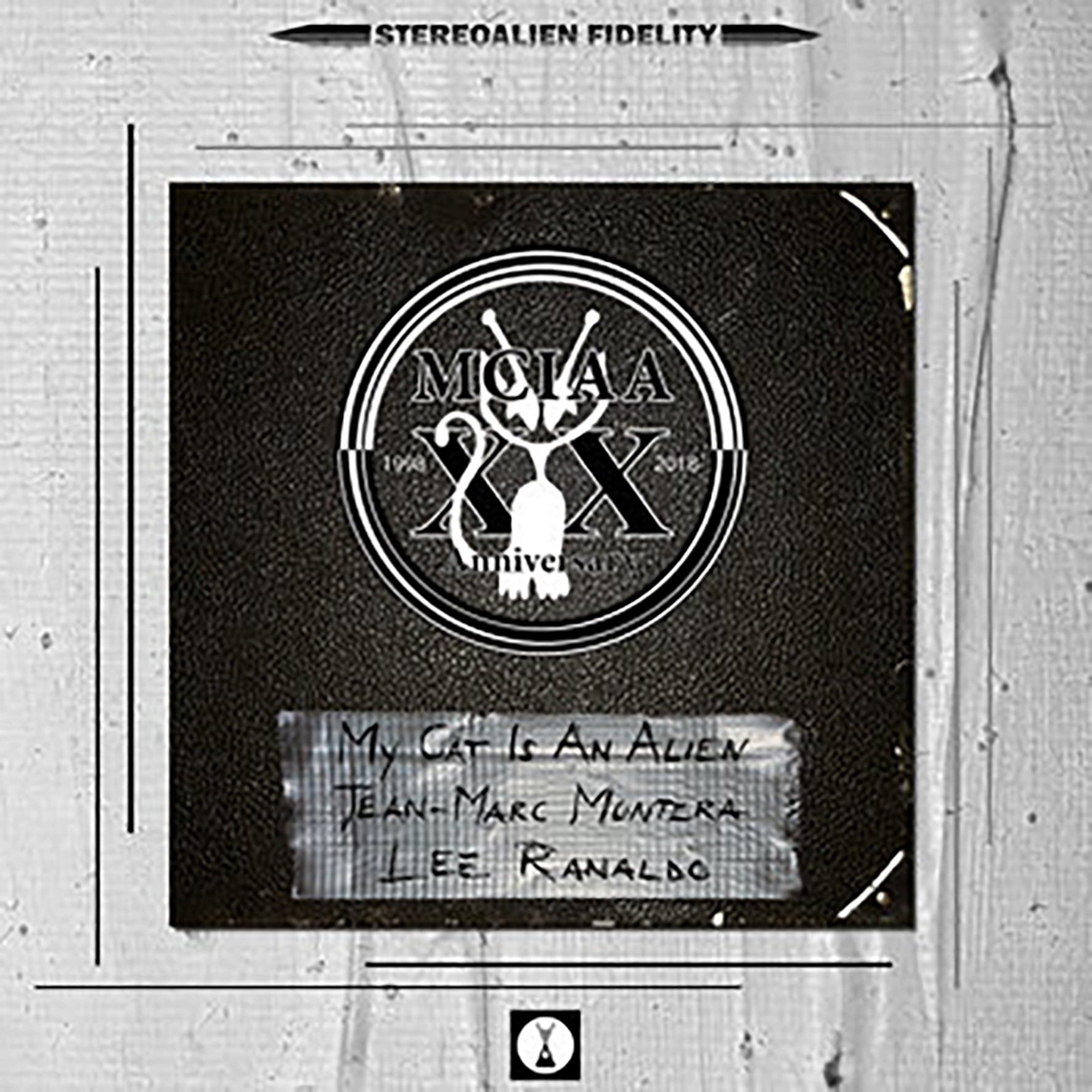 The Opalio brothers close an exceptionally productive year with this third and final release of 2019. I suppose just about every My Cat is an Alien release could be described as a live album, given the duo's devotion to "spontaneous composition," but this one is live in the traditional sense: it was performed in front of an actual audience. More specifically, it is a document of a 20th anniversary concert that the brothers gave in their hometown of Torino back in 2018. As befits such an auspicious occasion, the Opalios were joined by a pair of their favorite collaborators: Lee Ranaldo and French composer/guitarist Jean-Marc Montera. Needless to say, it is always fascinating to see what transpires when unpredictable outside elements are invited into Maurizio and Roberto's shared consciousness and this release is no exception, as the quartet gradually wind their way into some truly uncharted frontiers in mind-melting, cosmic psychedelia.
The Opalio brothers close an exceptionally productive year with this third and final release of 2019. I suppose just about every My Cat is an Alien release could be described as a live album, given the duo's devotion to "spontaneous composition," but this one is live in the traditional sense: it was performed in front of an actual audience. More specifically, it is a document of a 20th anniversary concert that the brothers gave in their hometown of Torino back in 2018. As befits such an auspicious occasion, the Opalios were joined by a pair of their favorite collaborators: Lee Ranaldo and French composer/guitarist Jean-Marc Montera. Needless to say, it is always fascinating to see what transpires when unpredictable outside elements are invited into Maurizio and Roberto's shared consciousness and this release is no exception, as the quartet gradually wind their way into some truly uncharted frontiers in mind-melting, cosmic psychedelia.
I sincerely doubt that there is much that rattles Lee Ranaldo at this point in his career, but the prospect of sharing a stage with My Cat is an Alien for a spontaneously improvised live performance would probably be an extremely daunting endeavor for a lot of artists.For one, a huge amount of one's previously acquired musical knowledge would be instantly irrelevant (or even a liability), as the My Cat is an Alien aesthetic long ago transcended the use of any conventional scales, chords, harmonies, or rhythms.Secondly, Maurizio and Roberto Opalio have been closely collaborating for two decades now and they are very much on a wavelength that is uniquely their own.Furthermore, rehearsing or planning out how the performance should unfold is very much anathema to the MCIAA vision.Given their past work with both the Opalios and each other, however, both Ranaldo and Montera showed up with some solid intuitions about how they could seamlessly expand the MCIAA vision without running roughshod over its essential character.In fact, for the first ten minutes or so, it is almost possible to forget that Ranaldo and Montera are even present at all, as they mostly just hang back and provide a percussive backdrop to Roberto's queasily spectral vocalizing.For his part, Ranaldo does periodically take the microphone to contribute some spoken word, but it never becomes the focal point.Rather, it has the feel of a fragmented overheard conversation with an enigmatic context and an elusive trajectory.Once Ranaldo and Montera shift their focus to their guitars, however, the performance rapidly snowballs into a visceral and explosive twist on the Opalios' smeared and swirling deep space reveries.   
Obviously, getting to experience a noise-ravaged and volcanic twist on the Opalios' hallucinatory maelstrom of alientronics and repurposed toys is a huge part of XX Anniversary's appeal, but there are also some wonderfully transcendent moments along the way that feel like something altogether new.While I would be hesitant to say that the performance is ever less than otherworldly, the quartet sometimes delve into evocative passages that feel like something distinctly different from the Opalios' expected transmissions from the outer reaches of the universe.The most surprising one occurs quite early on, as there is a brief window where the performance feels like an ancient ritualistic dance, as the foursome's palette is pared down to little more than bells and an Irish frame drum.That stage of the piece's evolution is admittedly short-lived, however, as the ensemble soon finds their way into some even more unfamiliar vistas.Moments later, for example, it sounds like a cartoon robot is falling down a flight of stairs as a churning bed of guitar noise howls and a tight formation of jet fighters strafes the neighborhood.Other times, the endlessly shifting cacophony resembles musique concrète, a roomful of strange and clattering mechanized installations, air raid sirens, or a violently distorted public address system getting sucked into another dimension.There are also some moments in which the quartet sound exactly like My Cat is an Alien, but the best possible version of it, approximately an even more nightmarish version of Tarkovsky’s Solaris in which scores of disturbed and jabbering memory-ghosts emerge from the walls all at once.
The only caveat with this album's adventurously shifting trajectory is that it unavoidably carries some significant instability and ephemerality along with it: there are definitely some passages that I wish had lingered and evolved much longer before being subsumed by the next wave.That tends to comes with the territory in any four-way improvisation though, so the important thing is whether or not the rewards are significant enough to counterbalance that tendency.In the case of XX Anniversary, I would emphatically say that they are: Montera and Ranaldo steer the Opalios into some truly fascinating territory that they never would have gotten to on their own.In fact, there are a handful of themes that could easily form the core of their own full-length albums if Maurizio and Roberto had any interest at all in revisiting or cannibalizing their past work.Of course, they do not, so the most beautiful moments on XX Anniversary are exactly that: flashes of brilliance documented at their moment of conception, but destined to never appear again in any other form.For the most part, it is the sheer number of such moments that make this performance a compelling and one-of-a-kind listening experience.Beyond that, I quite enjoyed some of the more unfamiliar elements and juxtapositions that found their way into this album, such the acoustic percussion or the way that Roberto's rattling and broken-sounding "self-made double-bodied string instrument" blended with the guitar noise of his collaborators.XX Anniversary does not quite offer the same pleasures as some of MCIAA's more focused and sustained plunges into the lysergic depths, but this alternative course is quite a satisfying experience in its own right.I wish I lived closer to Torino.
Samples can be found here.
Read More
- Administrator
- Albums and Singles
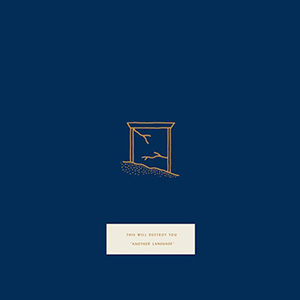 For their fourth studio album, this Texan combo retains their guitar-centric post-rock approach but expands more into abstraction and dissonance amongst these nine instrumental compositions. Shades of shoegaze and electronic ambient pepper the pieces, but the TWDY do an exceptional job at making sure the record is one that is impossible to easily categorize.
For their fourth studio album, this Texan combo retains their guitar-centric post-rock approach but expands more into abstraction and dissonance amongst these nine instrumental compositions. Shades of shoegaze and electronic ambient pepper the pieces, but the TWDY do an exceptional job at making sure the record is one that is impossible to easily categorize.
The drastic within-song changes that appear on this album are the moments that I found particularly fascinating."New Topia" begins with gentle guitar melodies from Jeremy Galindo and Chris King, accented by subtle electronics before bursting open at the midway point.The gentler stuff is still there, but overpowered by rapid-fire drumming and heavier guitar sounds.The band’s way of transition from peaceful to explosive while still maintaining a consistent composition is expertly accomplished.
That dynamic shift appears in a few other places throughout the album as well:the snappy drum loops of "Invitation" might at first contrast with the gentle guitar passages, but throughout an all too short four minutes the band builds layer by layer into a dramatic coda.This makes for a climax that retains beauty from before, but with an unparalleled force and intensity.That transition from gentle to heavy also is apparent on "Serpent Mound," although its change from fuzzy guitar and tasteful overdriven noise into slowly shambling noise rock is not quite as dramatic.
This change in structure is not a gimmick, nor is it overused on the album.For its first half, "Dustism" has the band mixing dubby echoed drums and insistent cymbals with quiet guitar, with a just slightly out of tune quality that is reminiscent of recent Jesu works before the band uses the second half to shift up the rhythm.It is comparably a minor variation, but one that goes a long way within the piece and is extremely effective in keeping it interesting.The albums conclusion, "God's Teeth" is the most expansive, with the band using less of the fuzzy ambient haze that drenches most of the album.Building from gentle and delicate guitar sounds, much of the piece is slow and pensive.In its closing minute, everything decays to a fuzzy, noisy mass that could almost be a tape melting.
This Will Destroy You have never been known for overly subdued works, and Another Language continues their tradition of grandiose, yet tasteful cinematic works.Even with all of this drama injected into four to seven minute segments, the subtlety and nuance of their songwriting results in a record that succeeds on multiple levels, not just in sheer force, but also in the tiny details that surround the bombastic moments.
samples:
 
Read More
- Administrator
- Albums and Singles
 A spate of vinyl reissues has brought welcome attention to Family Fodder more than 30 years after they formed, and their eclectic music sounds as engagingly fresh, naive, and wise, as ever.
A spate of vinyl reissues has brought welcome attention to Family Fodder more than 30 years after they formed, and their eclectic music sounds as engagingly fresh, naive, and wise, as ever.
 
Legend has it that Family Fodder frequently used a parlor game approach to songwriting. This technique sought to encourage spontaneity and happy accidents. Thus, after someone had spent five minutes on a lyric, it would be passed to the person on the right. This would continue, with responsibility for musical direction similarly shifting, until a piece was complete. Then it would be recorded with no revision. Whether or not this actually occurred on a regular basis, the group’s Euro-punk-folk, Afro-psychedelia, communal, voice-centered music is a remarkably consistent and endearing hybrid.
Just Love Songs is a limited edition, vinyl-only, release, which strips 11 of the group’s tunes down to their loveliest state. The first two of these give a clear indication of the variety in this collection. The sawing, cello-led, gnawing, dirge love mantra of "The Onliest Thing" gives way to breezy nostalgia on "Hippy Bus To Spain" (which resembles how I imagine Young Marble Giants might sound if they were stuck in a phase obsessed equally by Tropicalia and Cliff Richard’s Summer Holiday movie). Fuzz guitar is interjected here and there, most splendidly on end track "Don’t Get Me High" which might be the most polite sounding psychedelic track ever. "Primeval Pony" features the very alluring singing of Darlini Sing-Kaul, adult daughter of original Fodder vocalist Dominque Levillan, and sounds happily nonsensical enough to be a definite product of the Instant Songwriting technique, or an early Tyrannosaurus Rex composition.
The original group broke up in 1983 but have reformed numerous times around mainstay Alig Fodder. His singing on "Whatever Happened to David Ze" is suitably sombre, yet light (as nothing gets rammed down anyone’s throat on a Family Fodder recording) for a lovely reflection of the murdered Angolan political activist and musician. I suppose it would be great if Family Fodder became feted as post-punk legends, and suitably rewarded, but they are much less likely to stand still long enough for that to happen as they are to write a song charmingly taking the piss out of the very notion.
 
 
 
 
 
 
Read More
- Administrator
- Albums and Singles
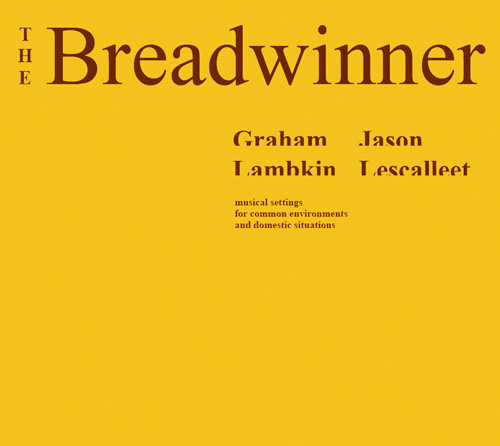 Imagine music resides everywhere that sound can travel. It flows from the faucet into the sink each morning, creaks out of the loose boards on the way up and down the stairs, and, incredibly, buzzes in your sweetheart's mouth as he or she snores noisily at 3 AM on Monday morning. The difference between music and not-music then pivots on the attention and consideration different sounds receive. Record them to tape, amplify and manipulate them, or set them into new patterns and a surprising, sometimes beautiful music can emerge. That's the music of The Breadwinner, the first album in Graham Lambkin and Jason Lescalleet's recently completed trilogy on Erstwhile.
Imagine music resides everywhere that sound can travel. It flows from the faucet into the sink each morning, creaks out of the loose boards on the way up and down the stairs, and, incredibly, buzzes in your sweetheart's mouth as he or she snores noisily at 3 AM on Monday morning. The difference between music and not-music then pivots on the attention and consideration different sounds receive. Record them to tape, amplify and manipulate them, or set them into new patterns and a surprising, sometimes beautiful music can emerge. That's the music of The Breadwinner, the first album in Graham Lambkin and Jason Lescalleet's recently completed trilogy on Erstwhile.
Recorded in 2006 and '07 at Graham Lambkin's home in Poughkeepsie, New York, The Breadwinner claims to be a collection of "musical settings for common environments and domestic situations." As it turns out, the music itself was derived almost entirely from noise captured around the house. Everything from water glasses to July 4th fireworks and squeaky hinges made the cut, so the music reflects the spaces and occasions for which it is apparently intended (tongue-in-cheek or not).
But the album isn't just the product of two guys wondering about the kitchen, living room, and bathroom with various microphones and some magnetic tape. Besides the keyboard and piano used on "Listen, the Snow is Falling" and "Lucy Song," the duo utilize their recordings as sound sources, deriving unearthly tones and igneous rhythms from the speeding up and slowing down of the source material. If the recording process doesn't make itself obvious in one way or another, the quality of the various sounds still point to it. On "E5150/Body Transport," a droning, out-of-body experience slowly resolves into a steady snore, suggesting that whole piece is actually an appropriated nightly annoyance. "Two States" compares and contrasts events that must have taken place at separate times. The mix is too solid, the balance too spot on for it to have happened without some tinkering.
Graham and Jason transform every room and make every object in those rooms new, whether by manipulation or by the arrangement of contrasting noises and complimentary sounds. Solid objects like the bedroom radiator or the fire place lose their rigid form and become malleable. That in turn gives the duo the freedom to re-contextualize everything, from mumbled voices to everyday appliances.
Mundane sources such as these typically keep emotional or communicative content well in the background. What we're supposed to do is listen to the sounds as sounds, not look for a message from the composers. After all, how could a refrigerator possibly speak to a sane person?
Perhaps unexpectedly, Lambkin and Lescalleet have left something personal in the mix, so maybe the fridge does just that: speak. First, there's the titles, which Graham and Jason probably understand better than the audience. But there's a Black Sabbath reference in there, and maybe one from The Hobbit too, and the aforementioned "Lucy Song" sticks to the ears with its bittersweet melody. The music moves through several moods, some ominous, others calming, and the reason for either isn't always clear. But the point is that the moods are there. So where are they coming from? "Listen, the Snow is Falling" can't help but communicate with its stunning sense of stillness and beauty, some of which is generated by the simple presence of a flickering fire. Even if the song were called "Track One," it would convey memories, feelings, and ideas.
And memory seems to be part of what Graham and Jason are up to with these songs. They make the lowly spoon and water glass speak to sensations usually provoked by rock 'n' roll songs, familiar melodies, conventional rhythms, and good books. The whole microcosm of Lambkin's house is laid bare for those curious enough to check it out. But, what about the experience of finding those noises, or the people who were around when they were made? There are obviously human noises on the record, but the figures themselves are conspicuously missing, or at least hidden. Which brings up a good question: is the breadwinner of the title the two musicians who made the record, or is it the house itself? Could it be the world at large, or is it maybe an unnameable something else?That blank spot there between the lines, where the music echoes out from invisibly?
samples:
 
Read More
- Administrator
- Albums and Singles
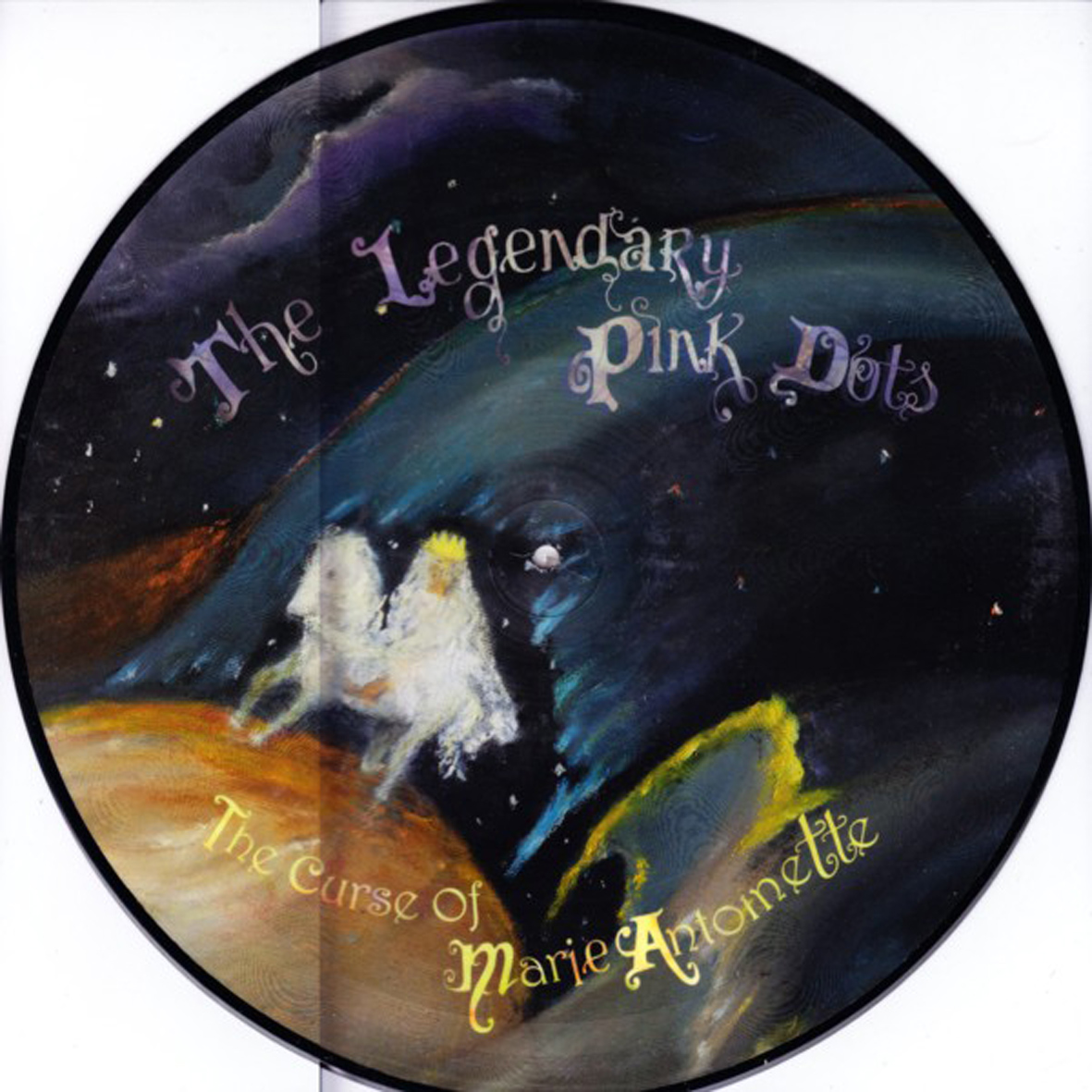 In typically perverse fashion, LPD bring their wildly prolific year to a close by burying their absolute best material on the second side of an extremely limited Italian picture disc (though it has thankfully now been made available digitally). The first half is not bad either, but the creepily phantasmagoric closer "Ghost of a Summer to Come" is one of the strongest arguments for Edward Ka-Spel's genius in recent memory.
In typically perverse fashion, LPD bring their wildly prolific year to a close by burying their absolute best material on the second side of an extremely limited Italian picture disc (though it has thankfully now been made available digitally). The first half is not bad either, but the creepily phantasmagoric closer "Ghost of a Summer to Come" is one of the strongest arguments for Edward Ka-Spel's genius in recent memory.
The Curse of Marie Antoinette is a concept album in which "a reincarnated witch claims one unwary soul and traps him in another dimension," which basically means that it is more or less business as usual for Ka-Spel and company.  Legendary Pink Dots' albums are always full of strange characters and cryptic themes, so the only real difference between this album and a "normal" album is that the songs form a narrative arc of sorts.  That ambitious long-form structure takes a while to become clear though, as the album's first half is fairly straightforward by Dots standards.
It is also a bit unpromising and uneven, though not exactly disappointing, as all three pieces boast at least one idea that I like (even if that does not necessarily translate into great songs).  The opening title track, for example, is a somewhat strident and exposition-heavy bit of piano-based chamber pop that unexpectedly dissolves into dreamlike haze around the halfway part.  "Something's Burning" is another song-like piece, but it is much more understated in tone than its predecessor and a bit too slow-moving for my taste.  Most of the individual elements are likable, but there is not much to it: just a plinking percussion loop, some cacophonous noises, a quasi-operatic female vocalist, and Ka-Spel's occasionally compelling vocals.  The side then ends with the nearly 9-minute instrumental "Hallucination 33" and it is Time To Jam.  Though "Hallucination" admittedly boasts a very cool and propulsive bass line, it also features a hell of a lot of wah-wah guitar noodling, which unfortunately makes it a song that I will not be listening to again.  However, it ends in a flurry of (presumably) dimension-shredding abstract noise that is the harbinger of much better music to come.
The droning, minimal "Catwalk" opens the second half in impressively deranged and uneasy fashion, as Ka-Spel delivers a beautifully haunting monologue over a bed of space-y noises, minimal synth throb, and an insistent clacking rhythm ("keep your arms stretched wide, friend, because that big, wide world below wants to consume you...whole").  It unexpectedly ends with a rather pretty and shimmering synthesizer coda though, which segues into quite a lovely ambient soundscape ("Ballerina on a Race Paper Leaf").  The album then concludes with the tour de force of the aforementioned "Ghost of a Summer to Come," which is easily among the best of Ka-Spel's monologue/soundscape pieces.  For one, the underlying music is wonderful, sounding distant and deeply warped and providing just enough coloration make even Edward's early description of the protagonist's picnic preparations sounds disturbing.  From there, it only gets better and better, unfolding into a flawlessly executed, blackly funny. and utterly mesmerizing tale of dawning horror.
I think I have been sufficiently conditioned at this point to never expect an entirely flawless album from Legendary Pink Dots, as regular over-indulgences and misfires are inevitable when a band is in a constant state of evolution and experimentation.  The Dots come admirably close this time around though, as The Curse of Marie Antoinette is at least half of a perfect album, sustaining unwavering greatness for over 20 minutes once it truly gets rolling.  Also, I suspect that many LPD fans will enjoy the album's first half much more than I do (particularly those who do not share my extreme antipathy towards guitar solos).  In any case, Marie Antoinette delivers three wonderful new songs, one of which ("Summer") is not just essential by LPD standards, but is one of the finest pieces recorded by anyone this year.
 
Read More
- Administrator
- Albums and Singles
 The Opalio brothers are certainly no strangers to uncompromising, indulgent mindfuckery, but their latest effort is extreme even by their own standards.  Stretched out across six discs, Roberto and Maurizio use their weird arsenal of homemade instruments and detourned toys to create an absolute monolith of abstract psychedelia.  Simultaneously nightmarish, overwhelming, and inspired, My Cat is an Alien have concocted an epic, brain-frying bad trip like no else before.
The Opalio brothers are certainly no strangers to uncompromising, indulgent mindfuckery, but their latest effort is extreme even by their own standards.  Stretched out across six discs, Roberto and Maurizio use their weird arsenal of homemade instruments and detourned toys to create an absolute monolith of abstract psychedelia.  Simultaneously nightmarish, overwhelming, and inspired, My Cat is an Alien have concocted an epic, brain-frying bad trip like no else before.
In the realm of crazily ambitious and dauntingly long albums, Psycho-System is very much akin to something like LaMonte Young's The Well-Tuned Piano rather than a run-of-the-mill pile-up of new material: this is simultaneously a very narrow and a very deep album.  Like Young, the Opalios essentially plunge so unapologetically deeply into their theme of choice that it gradually becomes something of a transcendent experience.  Perhaps "one theme exhaustively explored" is a bit of a reductionist view in this case, but I think it probably provides the clearest possible view of what the duo set out to do.  While the nebulous theme in question certainly evolves a lot of the course of the set's nearly 4-hour running time, Psycho-System feels much more like a single enormous, slowly evolving epic than six discrete shorter pieces.
Structurally, most of Psycho-System can be reasonably classified as drone, but with the caveat that it generally sounds quite...well...alien.  There is definitely a strong "outsider art" bent to the precedings, as many of the sounds that the brothers generate feel uncomfortably artificial, queasy, and dissonant, like someone is horribly abusing a battery of modular synthesizers.  In actually, however, it is hard to say quite what the Opalios are using to generate their otherworldly racket at any given time, as their extensive list of instrumentation includes such eccentricities as modified electronic devices, "alientronics," and a space modulator.
Notably, however, that list also includes items like a self-made double-bodied string instrument, a handmade pocket harp, and an antique zither.  Again, I have no idea which of those Maurizio is using at any given time, but there is recurrent, prominent use of a rattling stringed instrument that sounds like a koto throughout the album and that is what makes the whole thing work.  Those clear, sharp, and melodic passages are the perfect foil to the rest of the album's swirling, bubbling, buzzing, and humming otherness.  Psycho-System always sounds unique, but it is at its best when its spacier, lysergic tendencies come together with its more timeless, human ones.
Not every song adheres to that vague template though.  The most notable divergence is "Delirium," which combines Roberto's eerie wordless vocals with distantly clattering percussion and a hissing rumble to achieve an impressive degree of Kubrickian cosmic horror.  Another interesting aberration is "Bipolarism," which marries strangled-sounding guitar-like noise with insistently chirping electronics, though it later reaches an impressively crunching and cathartic percussion crescendo.  While the two pieces sound nothing alike, they do share a common trait in that they are much more minimal and space-filled than the rest of the album.  I have no idea of that was a deliberate sequencing choice or not, but the presence of two extended oases of differing density and texture makes the rest of the album's claustrophobic, hallucinatory maelstrom much more effective and listenable.
Notably, Psycho-System's six pieces were all recorded in real-time single takes over a three-day span, which surprised me: there is a lot going on here and it all feels very deliberate.  That goes a long way towards explaining the length though, as it takes a long time for just two loop-happy musicians to assemble the kind of snowballing unearthly racket that the Opalios have unleashed upon the world.  Whether or not this set would have been better if it were greatly shortened by overdubbing and aggressive editing is difficult to say.  It probably would be much more listenable and accessible, but I did not have much trouble making it through all six discs and I think the experience probably benefits a lot from being so exhausting and overwhelming.
Verdicts like "good" or "bad" seem irrelevant for an effort like this, which I think the Opalios understood perfectly when they were making it: Psycho-System comes with a warning sticker indicating that the album could potentially cause a psychotic break with reality with high volume and prolonged exposure.  That is a remarkably apt description of my own experience, I think–MCIAA definitely delivered what they set out to do.  Obviously, something this massive, difficult, and indulgent is probably unlikely to win the duo many new fans, but any curious aspiring psychonauts out there may rest assured that this is about as "outer limits" as music gets.  Also, I am pleased to report that my own psychotic break with reality does not seem to have been permanent.
 
Read More
- Duncan Edwards
- Albums and Singles
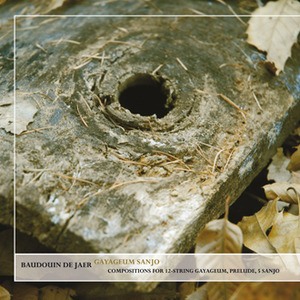 Legend has it that more than a thousand years ago King Gasil of Gaya ordered a stringed instrument to be created. Archaeology suggests that same instrument, the gayageum, may have been made even earlier. Either way, de Jaer's compositions have a quality that is both ancient and modern.
Legend has it that more than a thousand years ago King Gasil of Gaya ordered a stringed instrument to be created. Archaeology suggests that same instrument, the gayageum, may have been made even earlier. Either way, de Jaer's compositions have a quality that is both ancient and modern.
In something of a twist to expectation, this album is performed by Kim Hyunchae and Lee Hwayoung, two women young enough to have their high schools included on the sleeve notes. Their dexterous fingerwork and subtle approach to pacing and space allows them to reveal the calmness and combustion in violinist Baudouin de Jaer's compositions. Honoring a long tradition of Korean music, Gayageum Sanjo is aesthetically complex, bracing, and challenging, with a prelude and five sanjos linked to cosmological, mythological, and literary themes. The word sanjo means "scattered melodies" and the form is said to have been influenced by shamanistic music and the epic stories of the southwestern region, none of which is lost on de Jaer who spent six years composing this album.
A sense of tranquility is underlined by the 11 part section entitled "Cavitri," after Paul Verlaine's poetic tale of the woman who remained impassive for three days and nights, without moving "legs, bust, or eyelids," in order to save her husband. During this piece de Jaer also introduces percussive elements associated with Indian raga. As with "Cavitri," the titles "Earth Around The Sun," as well as "Elasticity" and "Chess Study" provide clues as to the abstraction, space, and symmetry of the music.
Gayageum may usually be strung with nylon, metal, or silk, and while I think silk strings are used in this recording, certainly Hyunchae and Hwayoung produce metallic and synthetic tones as well as an amazing range of deep, high, organic, hollowed, and thudding notes and sounds. The placid sections are not over pretty and the occasional clusters of explosive, fluttering, fingerplay are unpredictable without feeling self-indulgent. Gayageum Sanjo is a good place to retreat from the times when life can feel like a random sensory assault.
"May Oblivion, that dark and gloomy assassin, surround us,
or we be the target of Envy's bitter shafts,
Let us do as Çavitri, remain impassive,
But as she, at heart have a noble intention."
Read More

